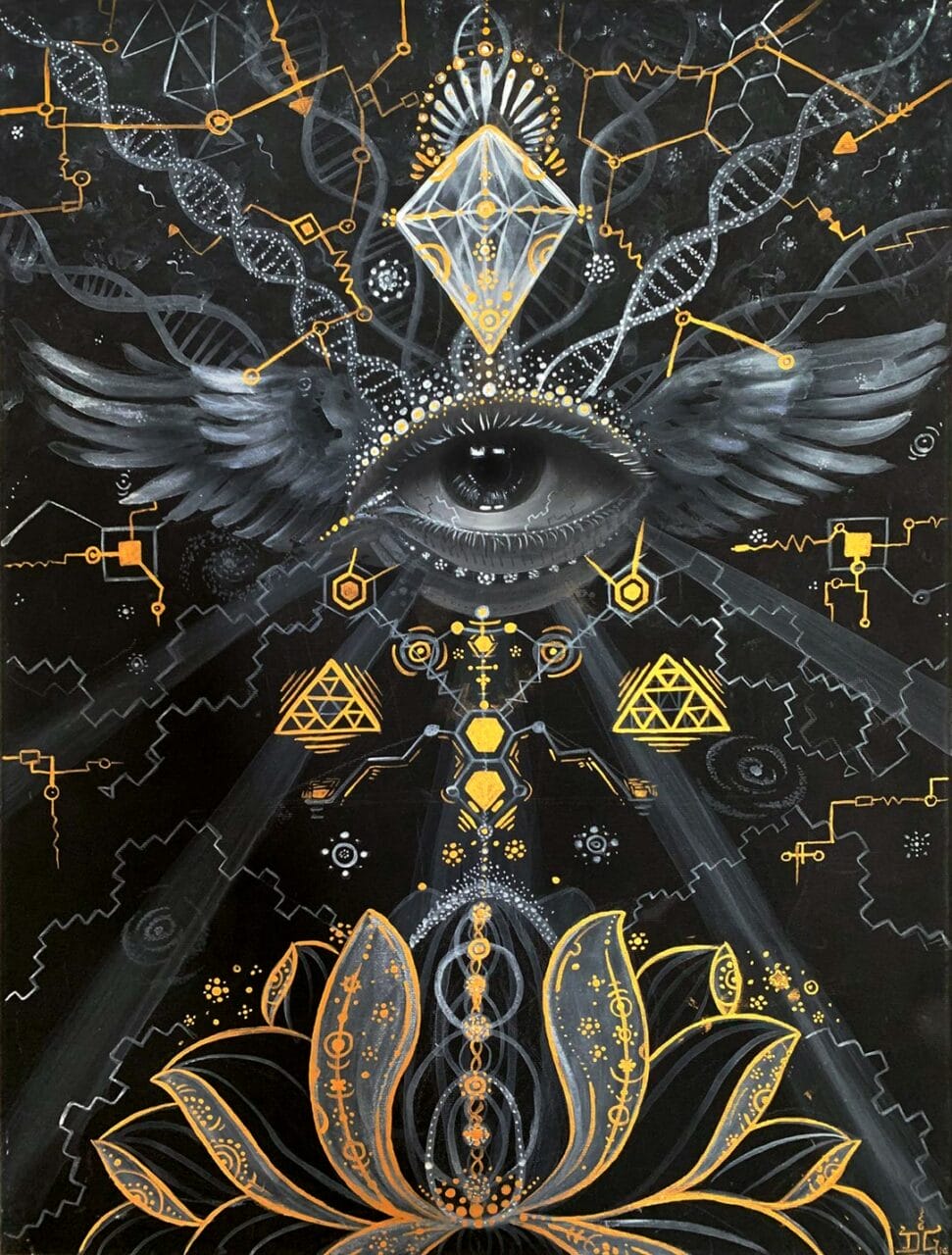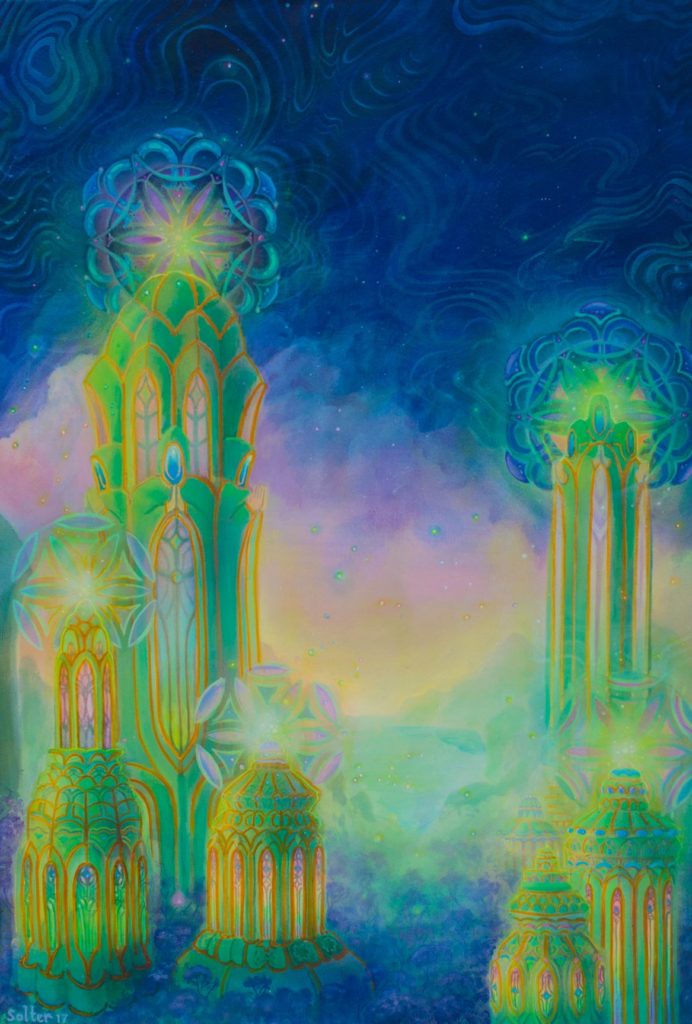
© Uni Kaya
An Old Tale of Magic Mushrooms
Magic Mushrooms has a long history, dating back to 9000 BC according to historical accounts. These unique mushrooms, which include over 200 different species, contain psilocybin, a substance known for its hallucinogenic effects. These effects may involve changes in perception, visual and auditory hallucinations, and deep spiritual experiences. These mushrooms have served in spiritual ceremonies, rituals, and practices in various cultures and tribes for millennia. Many of these historical uses originate from North and South America.
Magic Mushrooms in Ancient Times
Over time, many cultures have utilized natural psychedelics. Evidence from the Sahara Desert suggests that humans were using Psilocybe Cubensis over 7000 years ago. Archaeological finds show depictions of this mind-altering substance in prehistoric art across various regions. For instance, indigenous tribes from the Sahara in North Africa portrayed its use in their artwork dating back to around 9000 BC. Similarly, the renowned Selva Pascuala mural rock painting in Spain, roughly 6000 years old, implies the use of Psilocybe Hispanica in religious rituals. The influence of these substances on our cultural evolution, religion, art, societal norms, and everyday life is increasingly apparent. This substance has unquestionably made a deep impression on our culture and society.
Historical Overview of Magic Magic Mushrooms Use
Historically,magic Magic Mushrooms have a long history of use. The mind-altering substance we know today has been used across many centuries, with different customs related to its consumption. Who wouldn’t want to tap into nature’s gifts? It’s about time for Mushroom Coffee Canada to delve into the historical journey that brought Magic Mushrooms to its current state.
Major Highlights
- Dried Magic Mushrooms have been integral to traditional rituals and spiritual healing for centuries. Nowadays, they are used as a treatment for mental health conditions.
- Magic Mushrooms became a hallmark of the hippie culture and played a substantial role in the psychedelic revolution, encouraging its recreational use.
- Prominent figures like Wasson, Sabina, and McKenna brought psilocybin into the spotlight in the modern world.

© Jonathan Solter
Backing the Stoned Ape Theory
The Stoned Ape Hypothesis was proposed by Terence McKenna. He suggested that psilocybin could have contributed to human evolution, specifically cognitive development. Despite facing some skepticism, the theory’s intriguing premise is undeniable.
Ancient Civilizations and Sacred Practices
Ancient societies symbolized cubes in various forms, such as art and statues, indicative of the ceremonial usage of Magic Mushrooms. The Mayans and Aztecs used it to interact with supernatural beings, including gods. In the culturally rich Aztec society, it was referred to as “teonanácatl“, which means “flesh of the gods”. The concept of a psychedelic experience was unfamiliar to them, causing them to interpret it as a divine entity. Shifting north to Siberia, shamans there made use of hallucinogenic Magic Mushrooms. They specifically used a hallucinogenic variant of Magic Mushrooms known as “Amanita Muscaria” for spiritual healing and traditional practices, despite its toxic nature. This usage dates back nearly ten thousand years. In African tribal rituals, particularly within the Congo and Zimbabwean tribes, cubes were utilized for communicating with ancestors, facilitating visions, and promoting spiritual healing. These past societies provide context for the contemporary usage of psilocybin. The reverence for this substance in these cultures originated from its divine association and its ability to trigger mystical experiences.
Magic Mushrooms in Legends and Folktales
Several accounts, including those from Gordon Wasson, highlight the connection between Magic Mushrooms and the mystical dimension, underscoring its role in folklore and mythology as a means for divine contact and awakening. In ancient India, the Soma—a ceremonial drink mentioned in the Vedas—was thought to induce altered states of consciousness. Scholars like Wasson speculate that it might have been made from psychoactive plants, specifically fly agaric. Some even suggest that this ancient drink could have contained a mixture of different plants. Regardless of its origins, the psychedelic history suggests that Soma facilitated the appearance of sacred symbols during rituals, symbolizing a path to higher wisdom or spiritual enlightenment.
The Contemporary Age
A Look at the
Origins
Historical documents from the era before Columbus’ arrival indicate that psilocybin Magic Mushrooms was utilized by the Mayans and Aztecs. However, Spanish authorities in the 15th and 16th centuries deemed its usage as uncivilized, leading to its prohibition. Despite the ban, shamans secretly continued to ingest the magical Magic Mushrooms, thereby maintaining their cultural rituals for over 400 years.
Reintroduction to the Western World
The 1950s witnessed a revival of these substances in the Western world, primarily due to the pioneering work of individuals such as R. Gordon Wasson, Roger Heim, and Albert Hofmann. During their visit to Mexico, they successfully isolated the two psychedelic compounds (psilocybin and psilocin) present in the Magic Mushrooms obtained from the Mazatec tribe. Wasson later shared his adventures, experiments, and observations about magic Magic Mushrooms in Life magazine. His articles and personal narratives contributed to the recognition of the substance as a potent hallucinogen. By the advent of the 1960s, the substance had become synonymous with the Hippie culture and was perceived as a portal to spiritual revelations. However, its usage also sparked considerable debate and incited a revolution in the recreational use of hallucinogenic substances.
Further Development: Global Prohibition
In 1971, psilocybin was classified as a Schedule 1 illicit drug by the United Nations Convention on Psychotropic Substances, alongside Lysergic Acid Diethylamide and N, N-Dimethyltryptamine. At that time, all of these substances were considered to have no medicinal value and a high risk of abuse. This resulted in widespread criminalization in Western nations, including Canada and the U.S., severely limiting the spiritual and therapeutic use of the substance.
The Modern Reemergence of Psilocybin
In recent years, there has been a softening of the strict laws regulating the usage of psilocybin, starting with its decriminalization. This shift is in line with the UN’s permission for treaty member countries to control the substance based on their own judgment. Simultaneously, a growing body of research and clinical trials related to psychedelics and consciousness strongly argues for potential medicinal uses of psilocybin. A 2021 study investigating the therapeutic use of psychedelics suggests that the 1970 ban severely hindered further research. However, a preliminary study in 2004 rekindled interest in psilocybin, suggesting potential uses in neuropsychiatry, especially for treating mental health conditions such as:
- Depression, Anxiety, and Stress
- Post-traumatic Stress Disorder (PTSD)
- Obsessive-compulsive Disorder (OCD)
- Drug Abuse (Aiding in Addiction Recovery)
- Excessive Alcohol Consumption and Drugs)
The Influence of Media and Art
The topic of psychedelic cubes has grown so prevalent that it is represented in numerous forms. Different media, art, and literature forms have reignited the community’s interest in these substances. Movies like “Fantastic Fungi” by Director Louie Schwartzberg, as well as documentaries examining their healing properties, have enriched the public’s understanding of their mental and physical effects. Michael Pollan, the author of “How to Change Your Mind,” has studied the application of psychedelics for mental health and spiritual development, thus rekindling interest in their societal and therapeutic relevance.
Prominent Historical Advocates of Fungi
- María Sabina: María Sabina, a Mazatec shaman and poet from Mexico, played a role in making cubes known to the Western world by allowing Wasson to witness her Magic Mushrooms rituals.
- Gordon Wasson: Wasson, a writer, gained recognition for drawing global interest to the substance. His detailed account of his experiences with Sabina contributed to a broader understanding of its local use.
- Terence McKenna: Known as a strong advocate for psychedelics, McKenna was instrumental in underscoring their cultural and philosophical significance. He popularized the “Stoned Ape” theory through his speeches, writings, and studies, portraying it as a mechanism for cognitive advancement that shaped society.
The Timeline – A Quick Summary
with TRD.
| Prehistoric | Stone art found in the Sahara, Africa, depicts its usage during prehistoric times |
| Ancient | The Maya and Aztec civilizations incorporated teonanácatl into their religious and spiritual rituals. |
| 16th Century | Its use was discouraged due to its association with Indigenous beliefs |
| 18th Century | In 1799, four children accidentally ingested Psilocybe Semilanceata, bringing to light the drug’s “intoxicating” effects and highlighting the negative outcomes of its use. |
| 20th Century | Wasson and Sabina introduced the substance to the Western world, sparking the psychedelic revolution among the hippie movement. The UN legalized the possession and use of the substance. |
| 21st Century | Current clinical studies aim to verify its potential medicinal applications |
increasing. This has led to the authorization of a Special Access Program by Health Canada for its application.
Emergence of the Psychedelic Era and Beyond Redemption | Purchase Magic Mushrooms Online at Mushroom Coffee Canada
The consistent use of cubes by Mushroom Coffee Canada, which is supported by robust scientific research, will persistently expand until it achieves worldwide acknowledgment. Mushroom Coffee Canada’s online Magic Mushrooms store is fully prepared to facilitate this transformation. Our extensive range of products attracts customers, encouraging them to embark on the therapeutic and intriguing journey of psilocybin. Secure your preferred items from Zoomies today.
Commonly Asked Questions
No, Amanita Muscaria does not contain the active ingredients present in Psilocybe Cubensis. Instead, the psychoactive substances in fly agaric are muscimol and ibotenic acid. One prevalent hypothesis about Soma’s origin proposes it to be a combination of different psychoactive plants. Similarly, ayahuasca is a mind-altering drink. However, the only link between the two is the view of soma as an analogue of ayahuasca. It was examined for potential Magic Mushrooms poisoning after being classified as a toxic Magic Mushrooms. Today, we recognize it as the Psilocybe Mexicana.

